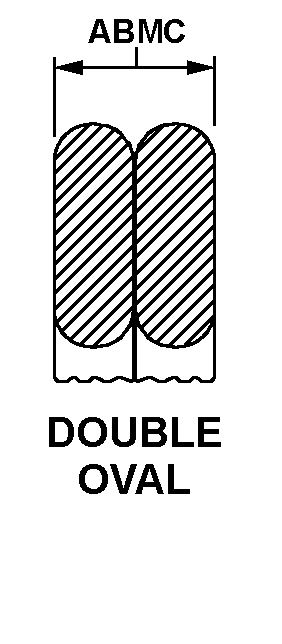5325014667316
Price Quote Get an up to date pricing and availability quote for this product. Order online or over the phone.
Quality Commitment
Serving our customers with quality and safety first.
- AS9120 Certified
- Audited supply chain
- ITAR Registered
- DDTC Registered
- HAZMAT Certified
- Customer service objectives
- Every product 100% inspected

5325-01-466-7316 Specification Set by the OEM (see RNCC code 3)
double oval
1.728in.
not casehardened
1.984in.
0.062in.
special flat
fwd transmisson
internal
85.5 rockwell superficial 15-n and 89.3 rockwell superficial 15-n
269000.0 pounds per square inch tensile
navy special project
material aisi/sae 1070-1090:surface treatment MIL-P-16232 type z, class 2
steel, aisi 1070 or steel, aisi 1078 or steel, aisi 1074 or steel, aisi 1080 or steel, aisi 1090
steel comp 1070 or steel comp 1078 or steel comp 1074 or steel comp 1080 or steel comp 1090
aisi 1070 assn std 1st material response and aisi 1078 assn std 2nd material response and aisi 1074 assn std 3rd material response and aisi 1080 assn std 4th material response and aisi 1090 assn std 5th material response
phosphate zinc
phosphate, MIL-P-16232, type z, class 2
Cross Reference Parts Part numbers that meet the specification outlined on this page and set by the OEM
Identification Item Identification Guide (IIG) and Item Name Code (INC)


Definition Definition of approved item name (AIN): "RING,RETAINING"
A resilient metal item, circular or nearly circular, which is designed to be inserted into an internal or external groove and retained by its own spring action, or it may have external prongs or projections designed to be inserted into a hole and retained by spring action of the prongs which grip by imbedding into the material. For items having internal prongs which perform the same function, see push on nut. It is used to keep and/or lock a part(s) in position, as a ball bearing on a shaft or in a housing. See also clip, retaining and pin, lock. Excludes ring, connecting, round.
5325-01-466-7316 Material Hazmat, Precious Metals, Criticality, Enviroment, and ESD
Indicates there is no data in the hmirs and the nsn is in a fsc not generally suspected of containing hazardous materials.
Item does not contain precious metal.
Represents items with no adp components
The item does not have a nuclear hardened feature or any other critical feature such as tolerance, fit restriction or application.
Identification Codes
HMIC: Hazardous Material Indicator Code. A one position code that identifies a hazardous item.
PMIC: Precious Metal Indicator Code. A one position code which identifies items that have precious metals as part of their content. precious metals are those metals generally considered to be uncommon, highly valuable, and relatively superior in certain properties such as resistance to corrosion and electrical conductivity.
ESD: Electrostatic Discharge. Indicates if an item is susceptible to electrostatic discharge or electromagnetic interference damage. electrostatic discharge damage occurs when an accumulation of static electricity generated by the relative motion or separation of materials is released to another item by direct contact. electromagnetic interference damage occurs when an item comes into proximity with an electrostatic or magnetic field.
ENAC: Enviromental Attribute Code. Identifies items with environmentally preferred characteristics.
CRITL: Criticality Indicator Code. Indicates an item is technically critical by tolerance, fit, application, nuclear hardness properties, or other characteristics.
Material Management Material categorization and source of supply
Defense logistics agency, enterprise business systems
Material Codes
SOS: Source of Supply. A three position code or routing identifier code (ric), which identifies the source of supply activity.
SMIC: Special Material Indicator Code. A two position code, which categorizes material on the basis of requirements for source or quality control, technical design or configuration control, procurement, stocking and issue control, special receipt, inspection, testing, storage, or handling.
MMAC: Material Management Aggregation Code. A two position code that identifies an item of supply to be managed by a specific activity manager.
MCC: Material Echelon Code. A two position code employed by the marine corps in classifying items into categories by materiel category and procurement echelon. the alphanumeric management code is in the first position and identifies the materiel category
IMC: Denotes wether items shall be subjected to integrated management under the defense supply agency or retained by the individual military service or other department of defense components for their management. Assigned by th activity responsible for item management coding.






